ASRock Unleashes the Phantom Gaming X Radeon RX Vega 64 & RX Vega 56 Graphics Cards
ASRock's Phantom Gaming family of AMD graphics cards just got a tad bigger with the addition of Radeon RX Vega 64 8G and RX Vega 56 8G models.
Motherboard manufacturer ASRock might be a newcomer to the graphics card game, but the company isn't afraid to go all-out to satisfy its customers. ASRock has enjoyed wide acceptance of its initial lineup of Phantom Gaming X graphics cards based on the Radeon RX 500 series, so now the company has added the Radeon RX Vega 64 and RX Vega 56 SKUs to the family.
ASRock's new Phantom Gaming X Radeon RX Vega 64 8G and RX Vega 56 8G graphics cards are carbon copies of AMD's reference RX Vega 64 and RX Vega 56 models. Both feature a reference PCB and a blower-type cooling solution that employs a high-performance composite vapor chamber for heat dissipation and a double ball bearing fan that provides active cooling.
Phantom Gaming X Radeon RX Vega 64 8G
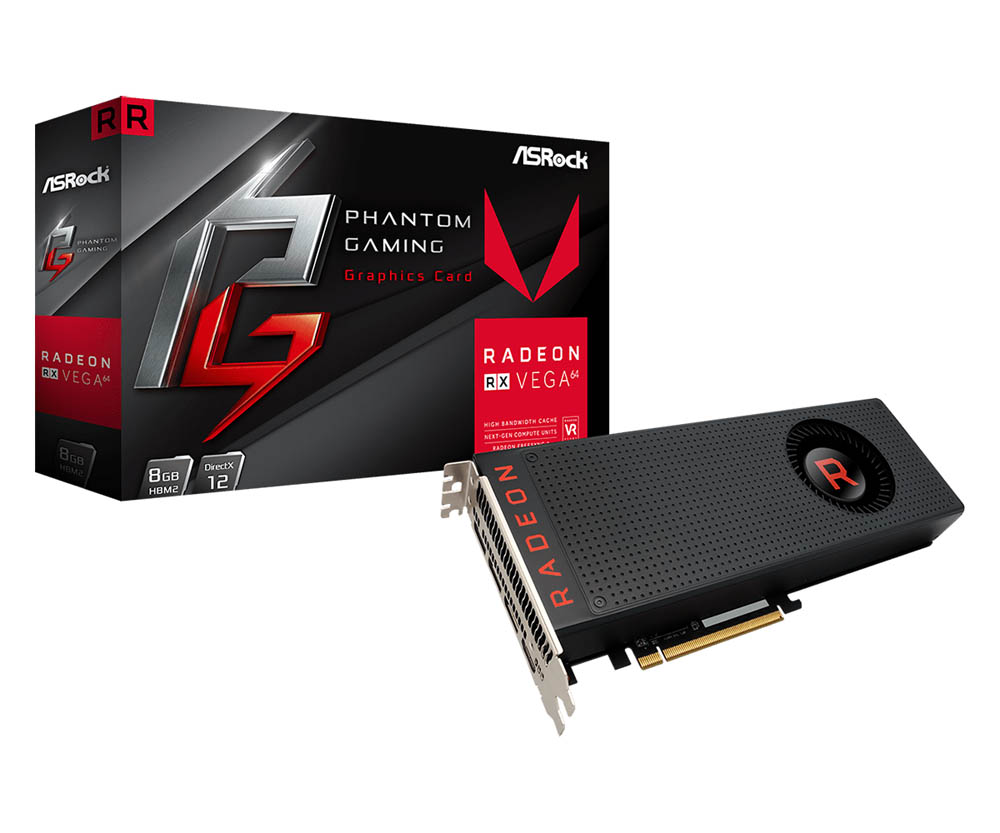
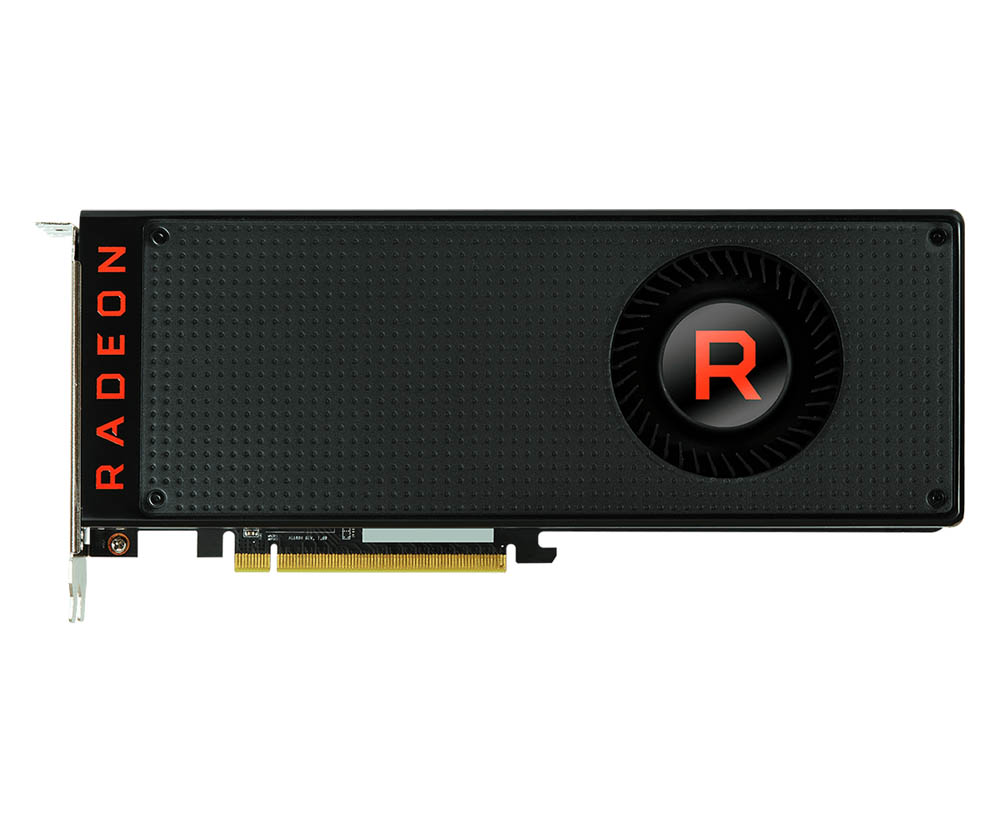


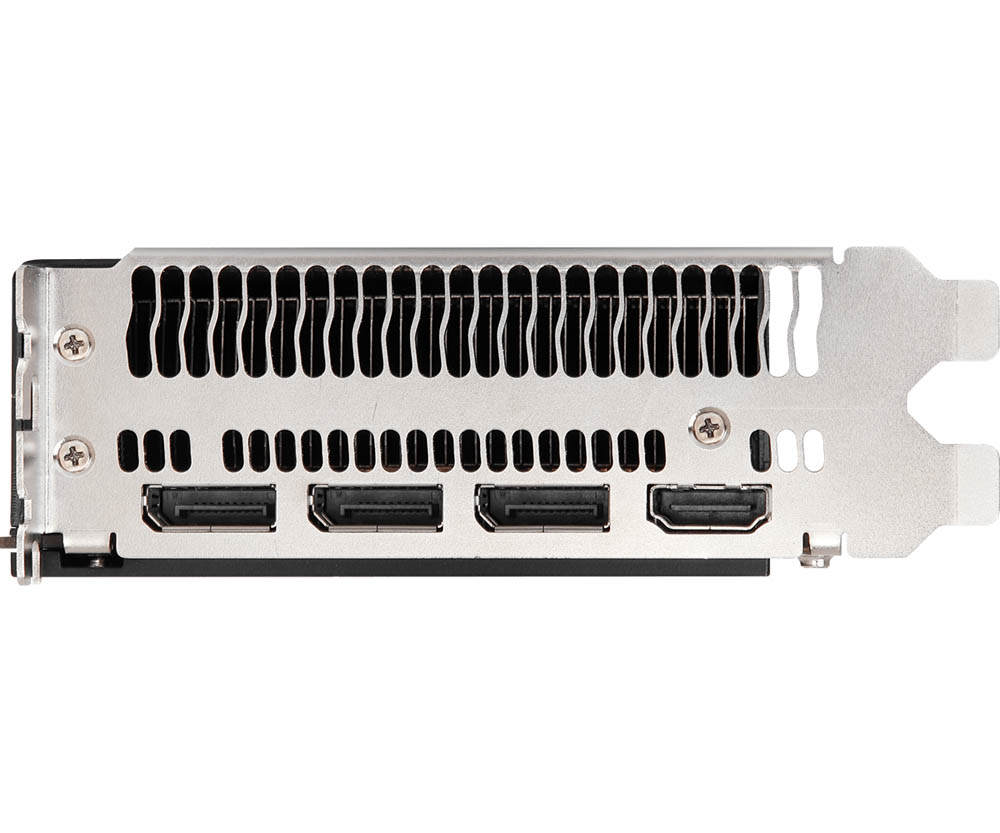
The Phantom Gaming X RX Vega 64 8G is ASRock's current flagship graphics card. It measures 280mm by 127.2mm and requires two slots for installation. The Phantom Gaming X RX Vega 64 8G is based on AMD's Vega 10 silicon and sports 4,096 stream processors and 64 ROPs. The graphics card features a 1247 MHz core clock and a boost clock of 1546 MHz. It also has 8GB of high-speed HBM2 memory clocked at 953 MHz. The HBM2 communicates across a 2048-bit memory interface. This graphics card draws power from two external 8-pin PCIe connectors.
The Phantom Gaming X RX Vega 64 8G comes armed with one HDMI 2.0 port and three DisplayPort 1.4 connections. The card supports HDCP (High-Bandwidth Digital Content Protection) content and 8K (7680 x 4320) displays.
Phantom Gaming X Radeon RX Vega 56 8G
Get Tom's Hardware's best news and in-depth reviews, straight to your inbox.
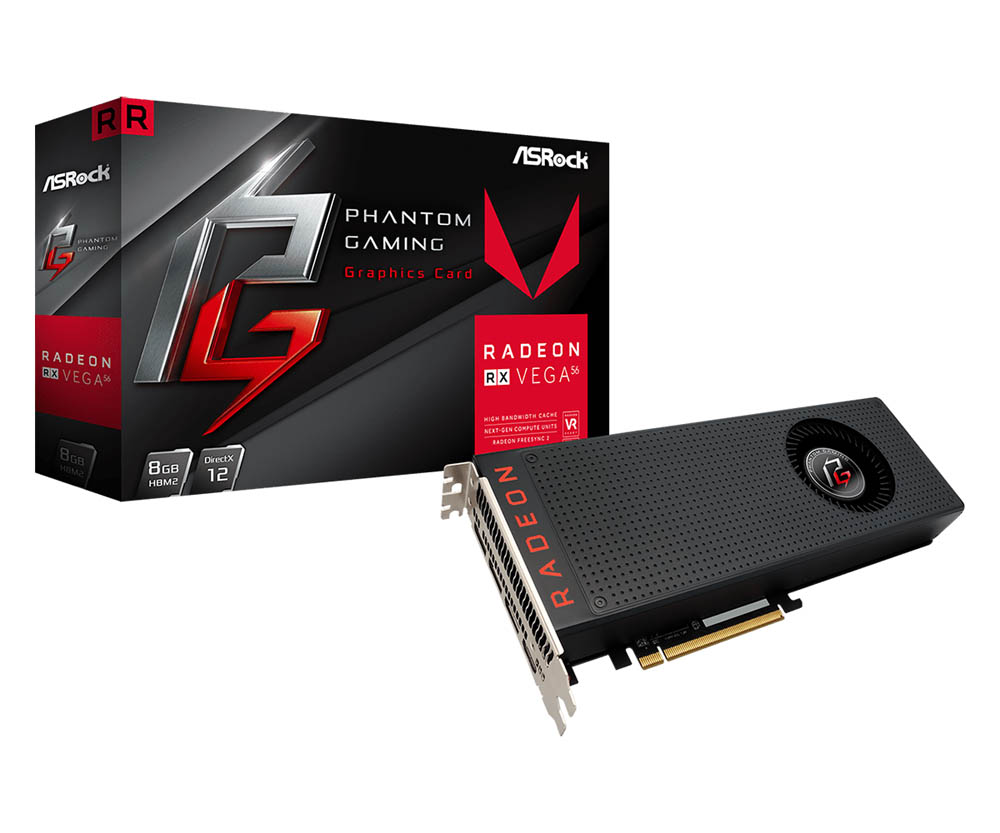
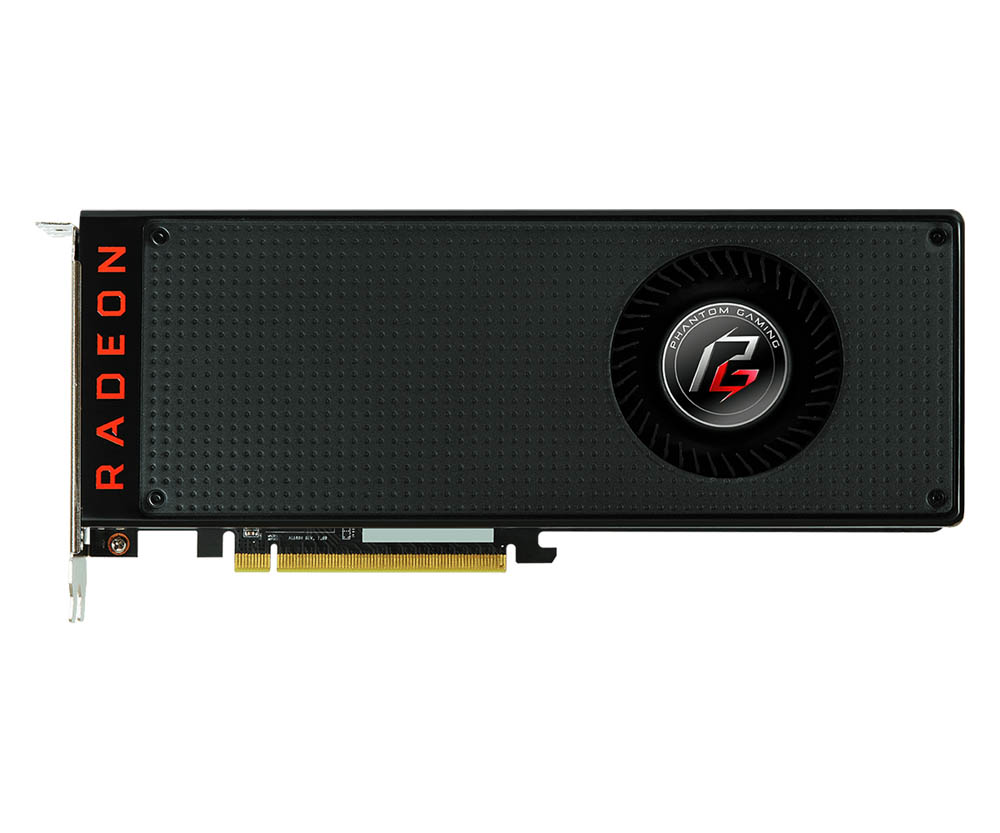


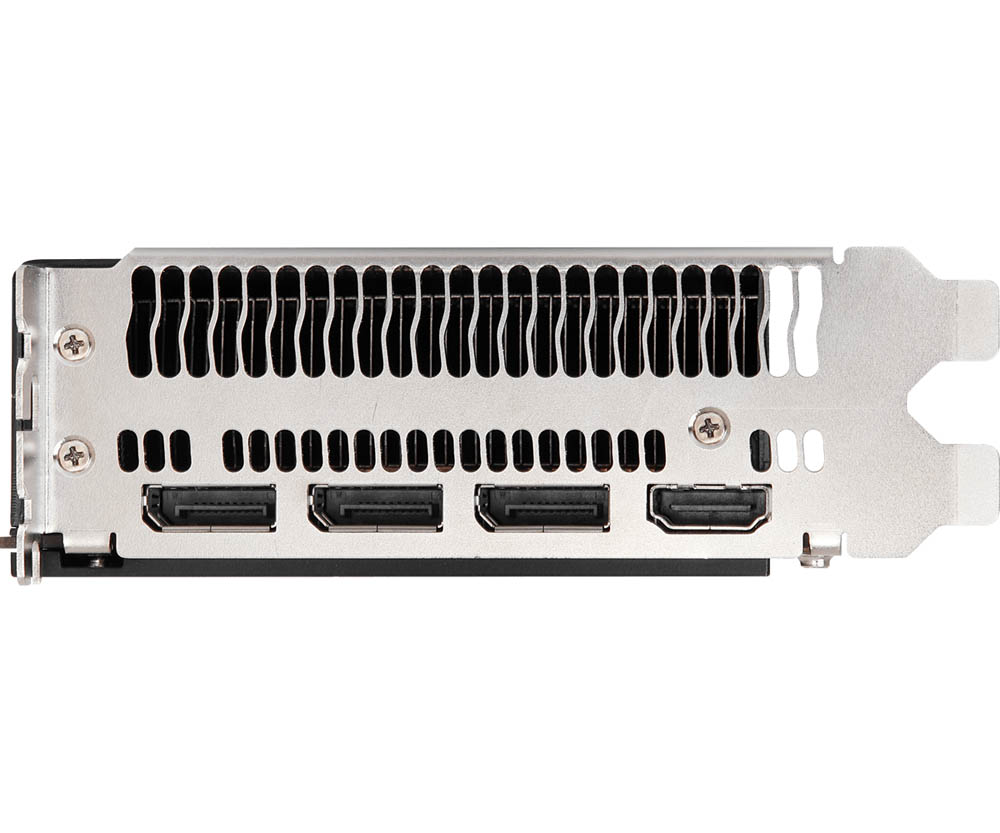
Just like its bigger sibling, the Phantom Gaming X RX Vega 56 8G is a dual-slot graphics card that measures 280mm by 127.2mm. It's built around the same Vega 10 architecture and comes with a total of 3,584 stream processors and 64 ROPs. The Phantom Gaming X Radeon RX VEGA 56 8G operates at an 1156 MHz core clock, and the boost clock scales up to 1471 MHz. Its 8GB of HBM2 memory operates at a slightly lower frequency of 800 MHz across a 2048-bit memory bus. The Phantom Gaming X RX Vega 56 8G has the exact number of power connectors and display outputs as its counterpart.
As always, ASRock ships both graphics cards with the Phantom Gaming Tweak Utility that allows you to monitor and overclock your graphics card. ASRock hasn't revealed the pricing and availability for the new models.

Zhiye Liu is a news editor, memory reviewer, and SSD tester at Tom’s Hardware. Although he loves everything that’s hardware, he has a soft spot for CPUs, GPUs, and RAM.
-
emeraldsmines1990 Reply21115399 said:Meh. Reference design. Only useful if PC case has poor cooling.
Really ? -
AgentLozen Vega 64 is on par with the GTX 1080 but consumes nearly 2x the power, is much harder to cool, and typically costs more.Reply
Is there ever a time when you should choose Vega 64 over the GTX 1080? Maybe if you get a great deal on it?? -
Michel Maza VEGA64 x 1080TiReply
-Better floating-point performance 12,665 GFLOPS vs 11,340 GFLOPS More than 10% better floating-point performance
-Much wider memory bus 2,048 bit vs 352 bit More than 5.8x wider memory bus
- Higher texture rate 395.8 GTexel/s vs 354.4 GTexel/s More than 10% higher texture rate
- More shading units 4,096 vs 3,584 512 more shading units
- More texture mapping units 256 vs 224 32 more texture mapping units -
photonboy Michel Maza,Reply
First, some unnecessary rudeness. Then... Theoretical specs are not benchmarks. Your memory bus numbers are meaningless when not placed in context with stuff like memory compression utilization.
TDP values are not recorded actual wall-draw wattage values either, especially for people who OVERCLOCK and found the Vega card wattages when through the roof.
RX-Vega 64 in some situations was throttling way, way down below what it was capable of doing in frequency plus a lot of the architectural improvements have yet to be utilized in gaming software.
AMD was supposed to try to do a die shrink and/or node optimization but I've seen no evidence that has yet happened. Probably didn't care with the cards selling so easily due to crypto.
GTX1080Ti averages roughly 30% faster over many games, sometimes higher when the VEGA cards throttle down due to temperature... with good cooling and games that utilize VEGA better the gap closes a lot... again though don't just throw out raw numbers trying to make yourself look smart. Just not how computers work. -
elw The guy listing harware advantages of vega got the point. I remmeber when rx 480 came out being compared to gtx 970 and being on par or slower especially in ''nvidia games''.After one year of driver updates it was 15%-30% faster in most games than gtx970. There are physical advantages in vega 64 over 1080ti. The only thing is what it was ment for :). Personaly if i wanted vega i would rather go for vega 56, but not for todays prices. I agree with other guy the vega is not fully untilized in games. Probably only game it does better than nvidia is Forza. Time will show if AMD will continually update drivers as it was in case rx480/580 to get max of it and if it will be enough to get on par with 1080ti.Reply -
ohenryy I wonder if they fine tuned the bios or also used the AMD reference. Asrock is known to tweak the best bios on their motherboards, hopefully their will bring their expertise to their Video cards line up.Reply
-
CatalyticDragon One nice thing about Vega is you get full speed INT8, FP16, FP32, and FP64 performance. It doesn't discriminate so it's awesome for compute based tasks and why it beats the 1080 and 1080 Ti in 3D rendering and other non-gamey tasks (they've been very popular for crypto 'currency mining').Reply
NVIDIA hobbles their consumer hardware in this area on purpose to push people into the higher bracket cards which I don't think is very nice.
The only reason you don't see the Vega 64 beating the 1080 Ti in a lot more games is down to optimizations.
Compared to the 1080 Ti the Vega 64 has slightly more transistors on a smaller process node (14nm vs 16 for the NVIDIA). It's got higher compute performance, more texture mapping units, but it falls down in the area of texture/pixel fill rate.
The architectures of the two are:
Vega : 4096 shaders : 256 texture mapping units : 64 render output units
1080 ti : 3584 shaders : 224 texture mapping units : 88 render output units
(they have the same memory bandwidth at 484GB/s)
So you see they both have strengths and weaknesses but if a game engine is optimized for one the other might suffer, and vice versa, but overall the Vega 64 appears the stronger card in more areas. Not bad when the MSRP is much lower.
It just so happens to be a fact of life that NVIDIA has been very good at getting developers to optimize for their hardware. And I think it's fair to say NVIDIA optimized their hardware for older APIs whereas AMD looked forward to Vulkan/DX12.
They are going to have to get through a rocky period while they wait for more game engines to be updated and optimized for new APIs. But you can't really optimize for hardware that doesn't exist so this was probably expected.
Good news is that process has already started.